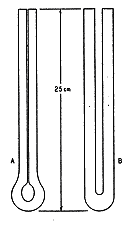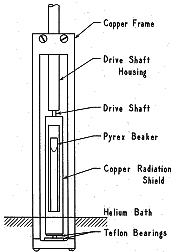



Russell J. Donnelly
541-346-4226 (Tel)
541-346-5861 (Fax)

![]() Early
Education
Early
Education
Russell
Donnelly was born in Hamilton Ontario Canada, of school teacher parents,
and attended Delta Collegiate Institute. There he came under the influence
of an incredibly fine teacher, Wilfred Mallory who was both physics teacher
and orchestra director at Delta. Russell went on to McMaster University,
majoring in Physics and did a bachelor’s and master’s thesis
on nuclear physics with Martin W. Johns. Russell is still in touch with
Martin.
“Coincidence Studies in In114 and Fission Yield of Cs134”
MSc thesis, McMaster University, 1952
Entering Yale in 1952, Russell joined the low temperature group headed by C. T. Lane, and including Henry Fairbank, which trained many of the now senior low temperature physicists of our day. The “house theorist” for our group was Lars Onsager, and Donnelly has always considered himself a student of Onsager as well as Lane. In later years Russell and Marian Donnelly endowed the Lars Onsager Prize of the American Physical Society
The picture on the right shows Lars and C. T. together at C.T.’s retirement party in 1973. The lecture on the board is by Bardeen, but Lars, seeing a camera, shoved Bardeen aside and primped for this picture.
Russell’s
thesis was:
“On the Hydrodynamics of Superfluid Helium”, PhD thesis, Yale
University, 1956
The thesis contained several investigations. One, done jointly with Oliver Penrose (who was a postdoc with Onsager at the time), showed that the decay of oscillations of liquid helium in a U-Tube obeyed the Landau two-fluid equations at low amplitudes, but the two fluids are coupled at higher amplitudes. This was published in the Physical Review:
"Oscillations of Liquid Helium in a U-Tube", R. J. Donnelly and O. Penrose. Phys. Rev. 103: 1137-1144 (1956).
Later Russell discovered that Archie Hollis Hallett had found similar results with other oscillating systems in his PhD thesis at Cambridge. They got together and after a couple of years produced a review article:
"Periodic Boundary Layer Experiments with Liquid Helium", R. J. Donnelly and A. C. H. Hallett. Annals of Physics 3: 320-345 (1958).
While it is clear that mutual friction couples the two fluids together, there is, to this day, no really satisfactory quantitative explanation of these results.
Onsager introduced Russell to G. I. Taylor, C. C. Lin and Chandrasekhar, all of whom were doing hydrodynamic stability theories. Onsager noted that the kinematic viscosity of helium II was needed, and Russell decided to measure it by measuring spinup in a rotating bucket. This was done with the help of Geoffrey Chester, who was also a post doc with Onsager at the time:
"Kinematic Viscosity of Helium II", R. J. Donnelly, G. V. Chester, R. H. Walmsley and C. T. Lane. Phys. Rev. 103: 3-4 (1956).
This was a totally unexpected result. It implied that the kinematic viscosity is not as one might expect, but closer to . Clearly the two fluids are somehow coupled by mutual friction. We have recently revisited this problem in connection with quantum turbulence (see the section on cryogenic fluid mechanics):
"Dissipation of Grid Turbulence in Helium II", S. Stalp, J. J. Niemela, W. F. Vinen and R. J. Donnelly. Physics of Fluids 14: 1377-1379 (2002).
On graduation Russell was recruited to the Department of Physics and James Franck Institute of the University of Chicago with the help of Morrel Cohen.
![]()




